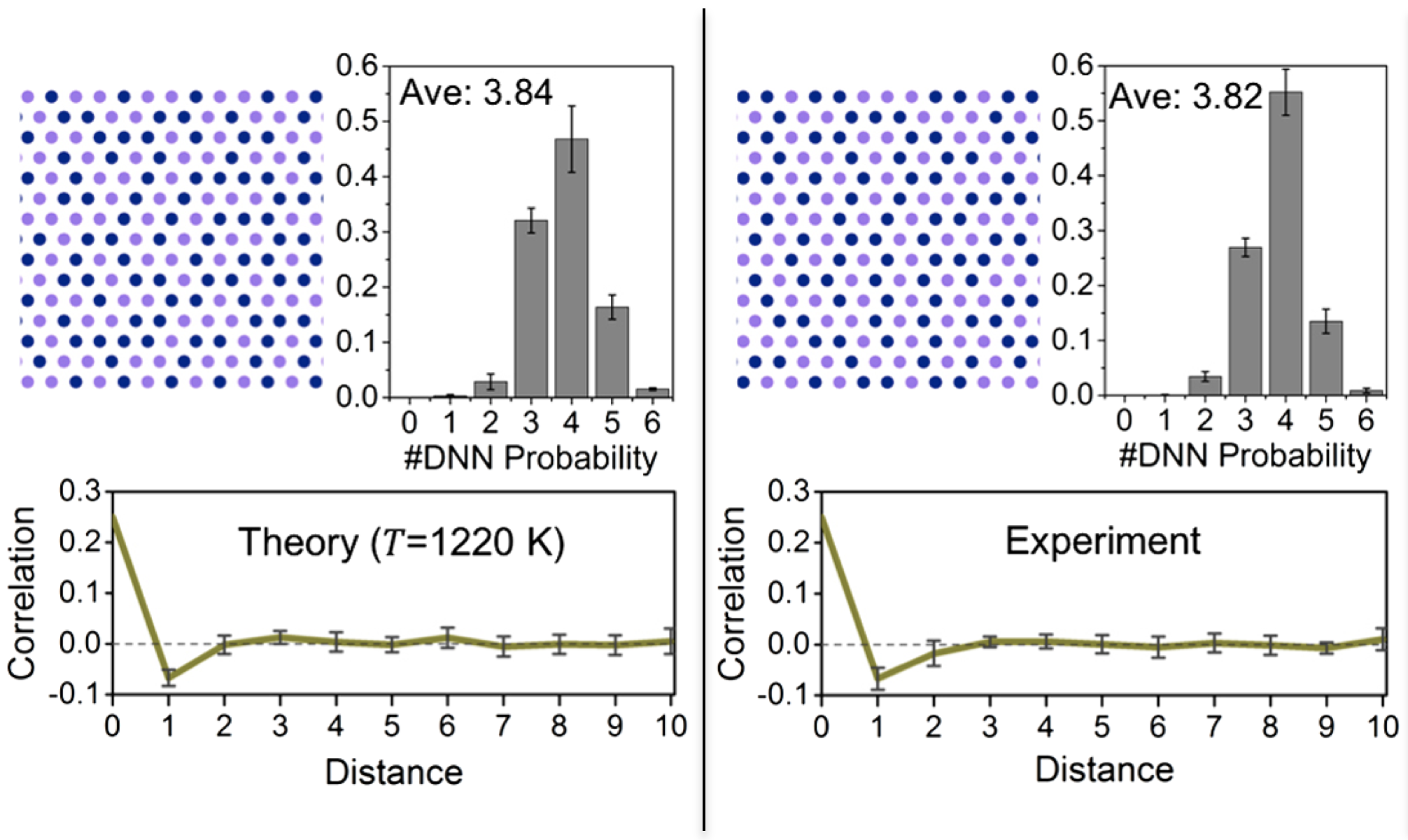(321f) Atomic Ordering in a Monolayer TMD Alloy
AIChE Annual Meeting
2020
2020 Virtual AIChE Annual Meeting
Nanoscale Science and Engineering Forum
Patterning and Assembly at the Nanoscale
Tuesday, November 17, 2020 - 9:15am to 9:30am
Distribution of atomic species in an alloy can be a determining factor in the chemical properties of the material. Advances in the fabrication and imaging of two-dimensional materials, in particular, transition-metal dichalcogenides (TMDs), have allowed researchers to successfully produce TMD alloys and precisely observe the atomic species distribution using scanning transmission electron microscopy (STEM). When the atomic number of the two transition-metals are sufficiently different, they can be distinguished clearly in high-resolution STEM images. Here, we report the observation of short-range atomic ordering in a NbS2-ReS2 alloy, and describe the properties of this ordering. [1] It turns out that the origin of the short-range ordering is geometric frustration, which occurs when the constituent interactions of a system cannot be simultaneously satisfied due to the underlying geometry. We find that this system is analogous to the 2D Ising model of antiferromagnetic spins in a triangular lattice, and long-range order is thoroughly suppressed. Using density functional theory, we build a lattice model that closely matches the statistical properties of the experimental atomic distribution. We also demonstrate the effects of atomic ordering on the band structure. We predict that the degree of ordering can be controlled by the growth temperature, allowing the tuning of the chemical properties of the material. This alloy has excellent ambient stability, a highly thickness-dependent bandgap, and promising NO2 sensing properties. [2]
- Azizi, M. Dogan, J. D. Cain, R. Eskandari, X. Yu, E. C. Glazer, M. L. Cohen, A. Zettl, “Frustration and Atomic Ordering in a Monolayer Semiconductor Alloyâ€, Phys. Rev. Lett. 124, 096101 (2020).
- Azizi, M. Dogan, H. Long, J. D. Cain, K. Lee, R. Eskandari, A. Varieschi, E. C. Glazer, M. L. Cohen, A. Zettl, “High-Performance Atomically-Thin Room-Temperature NO2 Sensorâ€, arXiv:2003.01909 (2020).

